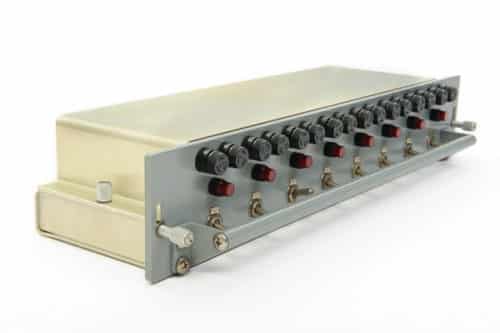Power Distribution Units (PDUs) 101
What is power distribution?
Power distribution is facilitated through different pieces of equipment that take the power conditioned by your uninterruptible power supply (UPS) and send it to your electronic components. Power distribution solutions can manage and even control energy consumption, distributing power efficiently to help reduce your operating costs and increase reliability.
Types of PDUs 
There are several types of PDUs available but are often classified as either non-intelligent or intelligent.
Non-intelligent PDU
Basic PDUs: typically a power strip that accurately distributes the correct voltage and current to multiple outlets.
Monitored PDUs: visually displays the current electric information, but it can only be viewed locally and lacks remote capabilities.
Intelligent PDU
Metered input PDUs: displays metered power locally and over a secure network. Helps managers avoid overloading circuits and calculate Power usage Effectiveness (PUE).
Metered output PDUs: also displayed locally and over a secure network. Not only does it monitor power usage, but can identify the power consumption at the device, server and rack level.
Switched PDUs: similar features as the Metered output PDUs, while providing the control needed to power on / off switches to specific outlets. It increases remote capabilities and creates power sequencing delays that minimize the risk of inrush currents and allows operators to power off devices that aren’t being used.
Single-phase vs. three-phase PDU
This term describes the number of electrical phases that a PDU receives and transmits. Over the past few years, average power consumption per server or device has rapidly increased. The typical power required at a rack has increased from 2 kilowatts to 12 kilowatts and continues upward.
Cabinet vs. rackmount PDU
PDUs come in two form factors: floor standing / cabinet and rackmount.
A floor standing PDU is a larger, three-phase power distribution unit that comes enclosed in its own cabinet. They’re often used to take incoming power and distribute it to an individual rack or group of racks.
Rack PDUs effectively distribute power to racks where multiple outlets are necessary. Beyond the capabilities of a basic power strip, a rack PDU can be used in 120V, 200-240V environments with a variety of plug and outlet configurations.
PDU checklist:
- Number of power outlets needed – every device within your rack will require a power source
- Type of sockets needed – most devices are powered from C13 or C19 outlets using plug-in cables, but some PDUs are available with color-coded and locking socket outlets
- Phases needed – single and three-phase
- Power load needed – include a safety margin of 10-20%
- Type of mounting needed – smaller PDUs can be installed horizontally within a 19-inch wide frame, but others with a large number of power outlets may require vertical mounting

Comments are closed